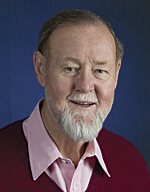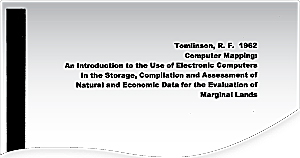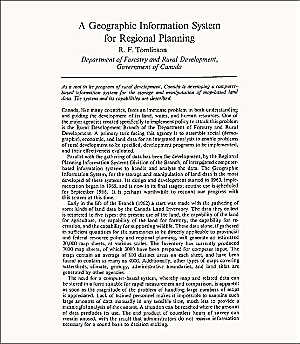The 50th Anniversary of GIS

Roger Tomlinson
Some events, like birthdays, weddings, and graduations, are easy to mark on the calendar. Others, like the beginning of a social movement or a language—or the invention of GIS—are harder to pinpoint. However, the confluence of three pivotal events in 1962 and 1963 makes this as good a time as any to celebrate a half-century of GIS.
The first event was the establishment of the Canada Land Inventory (CLI) in 1962. CLI set out to produce about 1,500 maps of land use and land capabilities at 1:50,000 and 1:250,000 scales. Though the maps were made by traditional manual methods, Roger Tomlinson (then employed by Spartan Air Services of Ottawa) convinced the head of CLI that computers could be used to automate map analysis. CLI invited Tomlinson to define the functional requirements of what would later be called the Canada Geographic Information System. His carefully considered use of the qualifier "geographic" caught on and has created opportunities and challenges for the discipline of geography ever since.

The title page of Roger Tomlinson's 1962 paper that started the work on GIS in the Government of Canada.
In August 1963, just as Tomlinson delivered his feasibility report to CLI, Edward Horwood of the University of Washington organized the First Annual Conference on Urban Planning Information Systems and Programs. Within a few years, that event became the annual conference of a new organization called the Urban and Regional Information Systems Association (URISA). Urban and Regional Information Systems eventually became known as geographic information systems, and the 50th annual URISA conference—now called GIS-Pro—took place in 2012.
Horwood spent most of a month at Northwestern University in 1963 teaching a short course about computer handling and mapping of census data. One participant in that course was Howard Fisher, an architect who taught planning and design at Northwestern. Fisher was inspired to develop his own computer mapping system and, with the help of programmer Betty Benson, soon developed a working prototype called SYMAP. With a grant from the Ford Foundation, Fisher later founded the Laboratory for Computer Graphics at Harvard, where he oversaw an important strand of the evolution of computer mapping into GIS.
Whether we choose these milestones or others as the origins of GIS, the fact remains that GIS has come a long way, baby, in a relatively short period of time. Its impact extends far beyond the hundreds of thousands of GIS professionals at work around the world. The recent Penn State-Public Broadcasting video series Geospatial Revolution dramatizes the far-reaching impacts of GIS and related technologies on how we think, act, and interact. At its 50th anniversary, GIS has itself become a kind of movement and a kind of language.
Original Documents
Digital copies of Roger Tomlinson's original feasibility report and related documents are available (by kind permission of the author) in the sidebar below.
For more information, contact David DiBiase, director of education, industry solutions, Esri (e-mail: ddibiase@esri.com).Sources
Chrisman, Nick. 2006. Charting the Unknown: How Computer Mapping at Harvard Became GIS. Esri Press.
Tomlinson, Roger. 1998. "The Canada Geographic Information System." In Timothy Foresman, ed. The History of Geographic Information Systems: Perspectives from the Pioneers. Prentice Hall.
